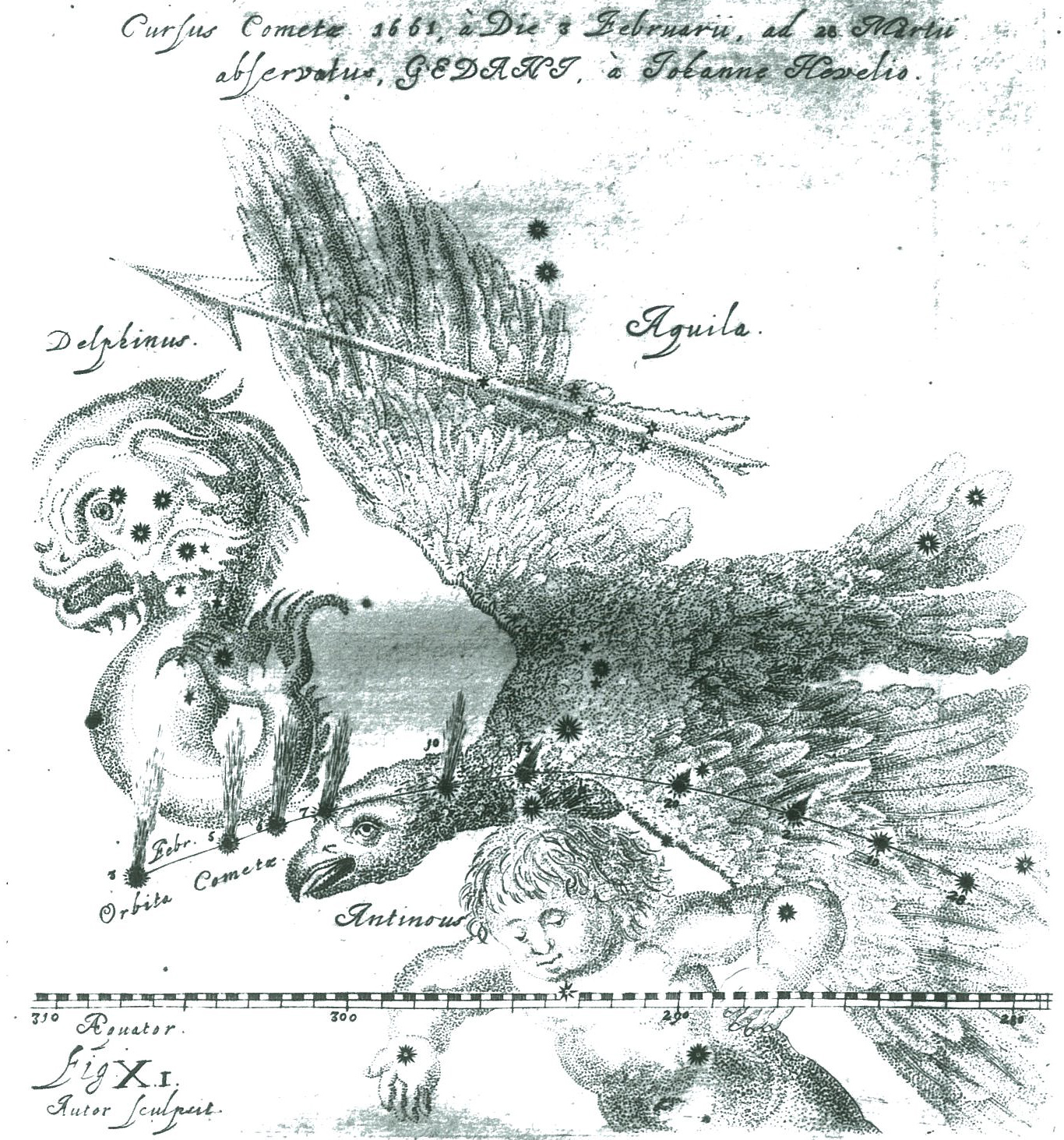

COMET OF THE WEEK
WEEK 16: APRIL 12-18
COMET 153P/IKEYA-ZHANG P/2002 C1
Perihelion: 2002 March 18.98, q = 0.507 AU
Comet Ikeya-Zhang was around 9th magnitude at the time of its discovery, but brightened rapidly, and had already reached 5th magnitude and naked-eye visibility by the end of February. By mid-March it had reached 4th magnitude, and during the latter part of March, shortly after perihelion passage, it was a 3rd magnitude in the evening sky with a bright naked-eye dust tail up to 5 degrees long. Shortly thereafter it went through inferior conjunction and entered the northern hemisphere’s morning sky, and although receding from perihelion it was approaching Earth, with a minimum distance of 0.40 AU taking place on April 30. It faded slowly, still being around 4th magnitude during the second half of April and with a naked-eye tail for which I measured a maximum length of 8 degrees.

 Photographs I took of Comet Ikeya-Zhang. Left: Evening of April 1, 2002, from south of Cloudcroft, New Mexico. The site overlooks the Tularosa Basin some 1500 meters lower. Right: Morning of April 13, 2002. The constellation of Cassiopeia is to the comet's lower left.
Photographs I took of Comet Ikeya-Zhang. Left: Evening of April 1, 2002, from south of Cloudcroft, New Mexico. The site overlooks the Tularosa Basin some 1500 meters lower. Right: Morning of April 13, 2002. The constellation of Cassiopeia is to the comet's lower left.
Following its closest approach to Earth the comet continued fading somewhat slowly, with the coma growing to a maximum size of around 18 arcminutes in mid-May. By the end of May it finally dropped below naked-eye brightness, and afterwards I continued to follow it visually until shortly before mid-August. The final observations were obtained in early October.
There have been suggestions made that a comet observed from the Orient in 1273, and another one observed from the Orient and from Europe in A.D. 877, might be even earlier returns of Ikeya-Zhang, but the positional data for those two comets are too sparse

The appearance of Comet Ikeya-Zhang is rather poignant for me, for three days after its perihelion passage my father, Nile Hale, passed away at the age of 83. Among other things, he was the person who initially got me interested in studying astronomy, and although he wasn’t any kind of astronomer himself, he did show a bit of interest in the subject, and he took one of the photographs of Comet West 1975n that I display in that object’s “Comet of the Week” presentation. Although in all honesty I don’t subscribe to any such beliefs, a part of me likes to think that Comet Ikeya-Zhang is escorting my father’s essence with it as it departs Earth for places unknown, and will bring it back when it returns around 2362 to check up on us and see how we’re doing. I wonder what kind of world our descendants might have to show him then.
“Comet of the Week” archive
Ice and Stone 2020 home page
Earthrise Institute home page